NORWEGIAN CULTURE:
How to take part in
social bubbles in Norway
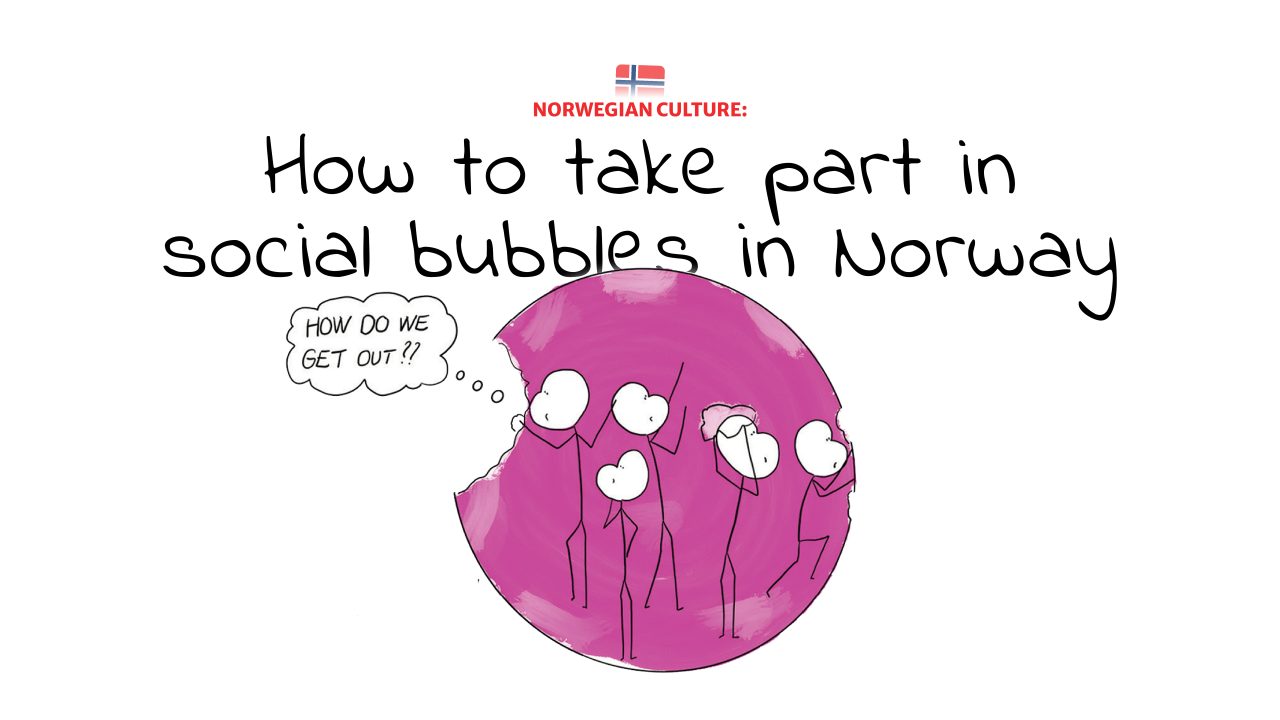
Several people inside a pink bubble. One person thinking; How do we get out of here?
Norway fascinates the world with the happiness, beauty and wealth of its people. Behind a nearly perfect facade, where Norway consistently achieves top international rankings, you will find people who may be a little different to what you might have expected. Even Norwegians themselves do not realise how special and different they are. A lot has to do with their social culture and how they communicate.
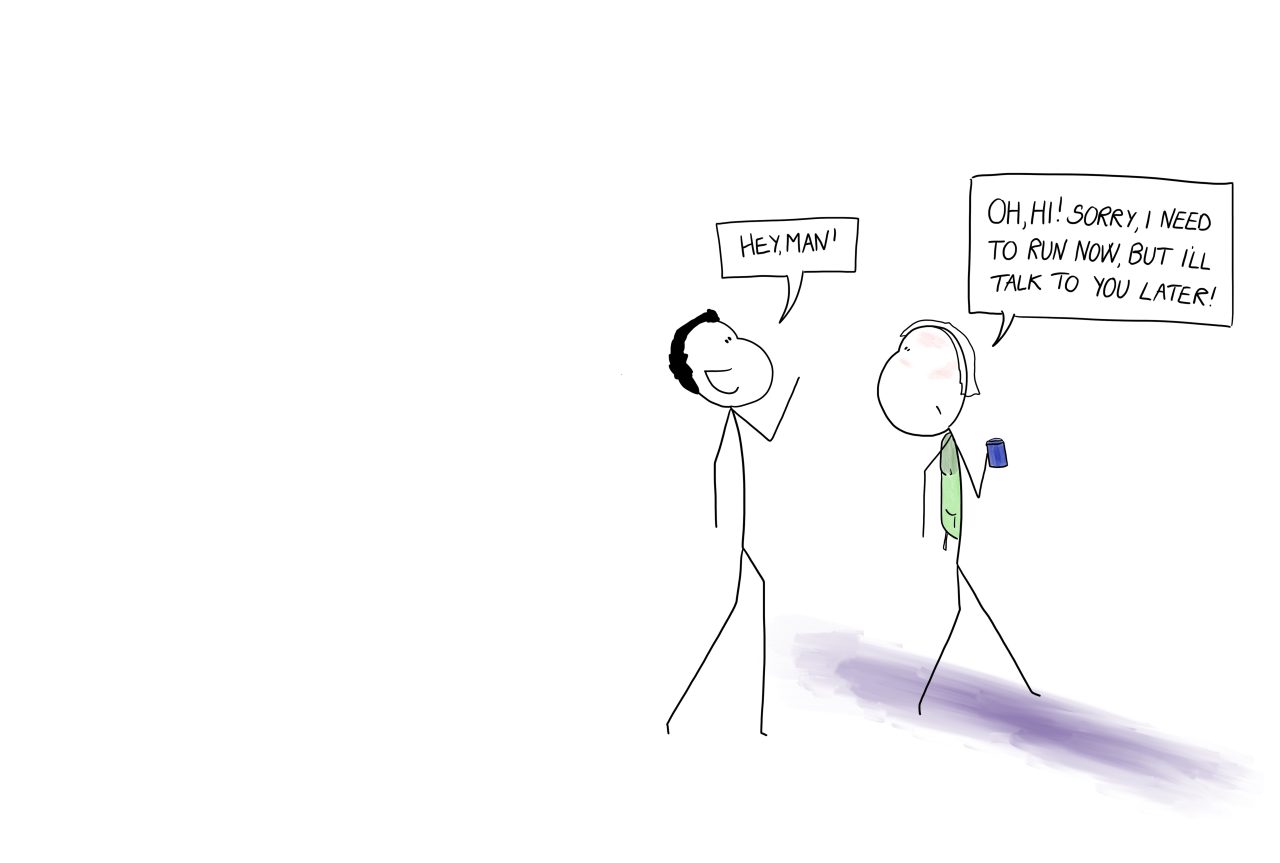
Two people running into each other. One person saying; Hey man! The other person is rushing on saying; Oh hi, I need to run but I will talk to you later.
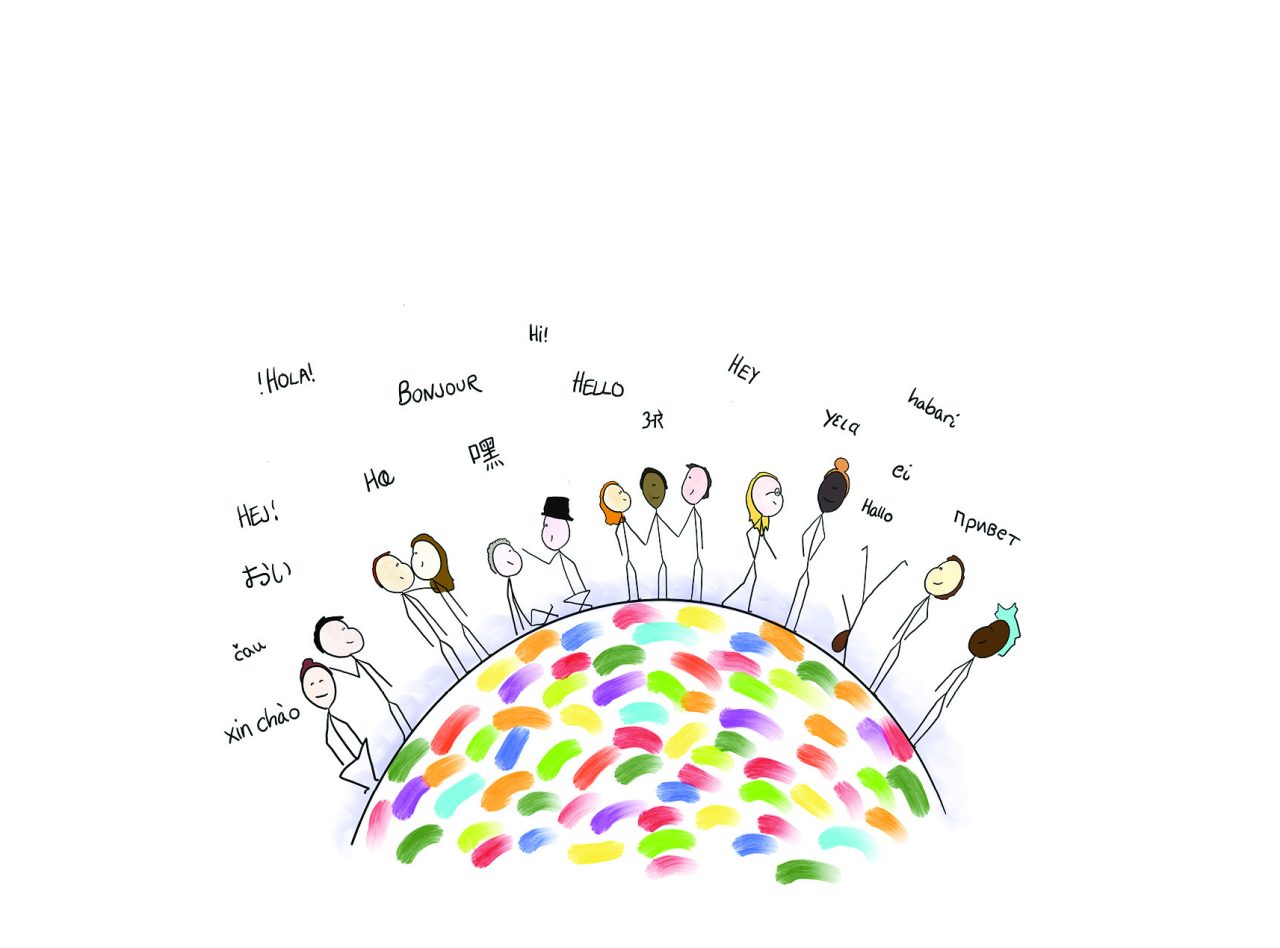
People standing around the globe saying hi to each other in many different languages.
You need to learn the unwritten social codes of your new society. To actively participate in activities that are common for locals.
Experience a new way of life; new food, new rituals, new traditions, new perspectives, new values, new languages.
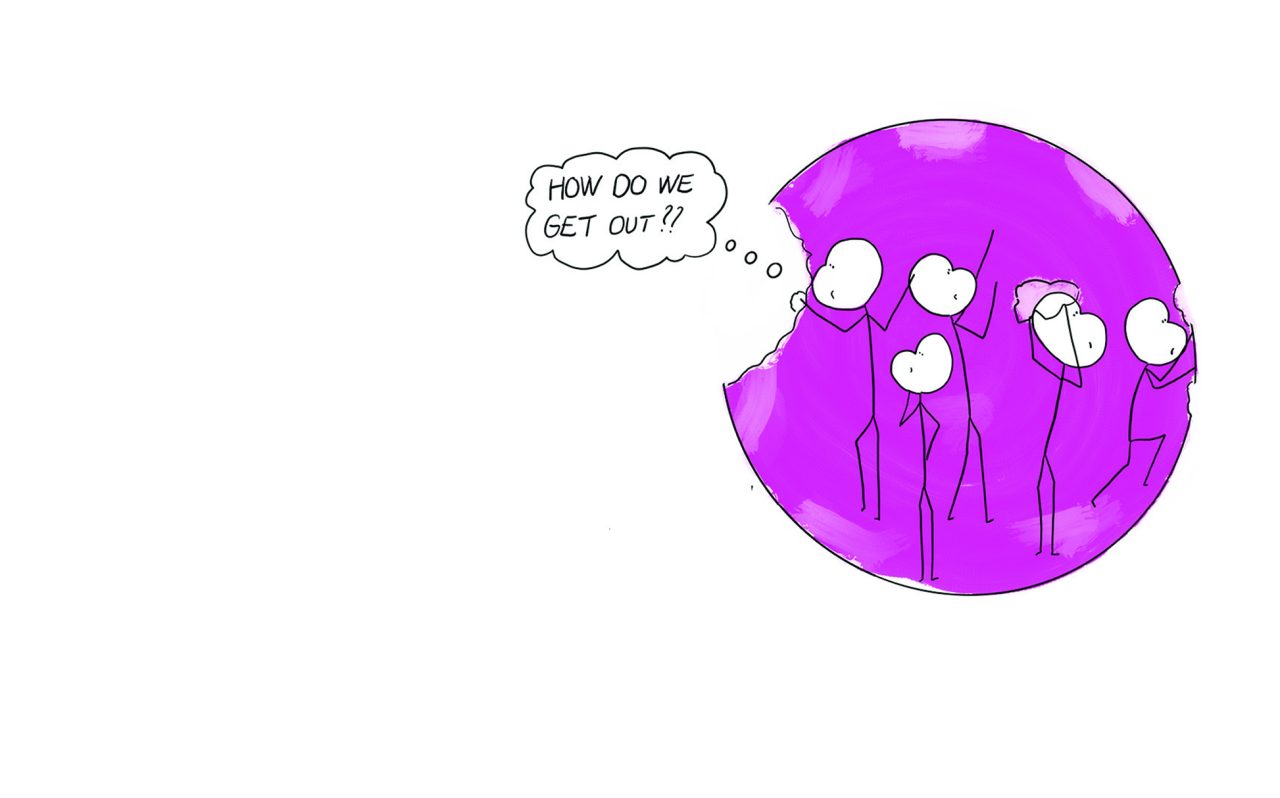
Several people inside a pink bubble. One person thinking; How do we get out of here?
You need to limit the amount of time you spend with fellow foreigners. Be more conscious about your biases, your expectations, your perceptions.
Locals who want to connect with foreigners need to do the exact same thing – to be open to different ways of life.
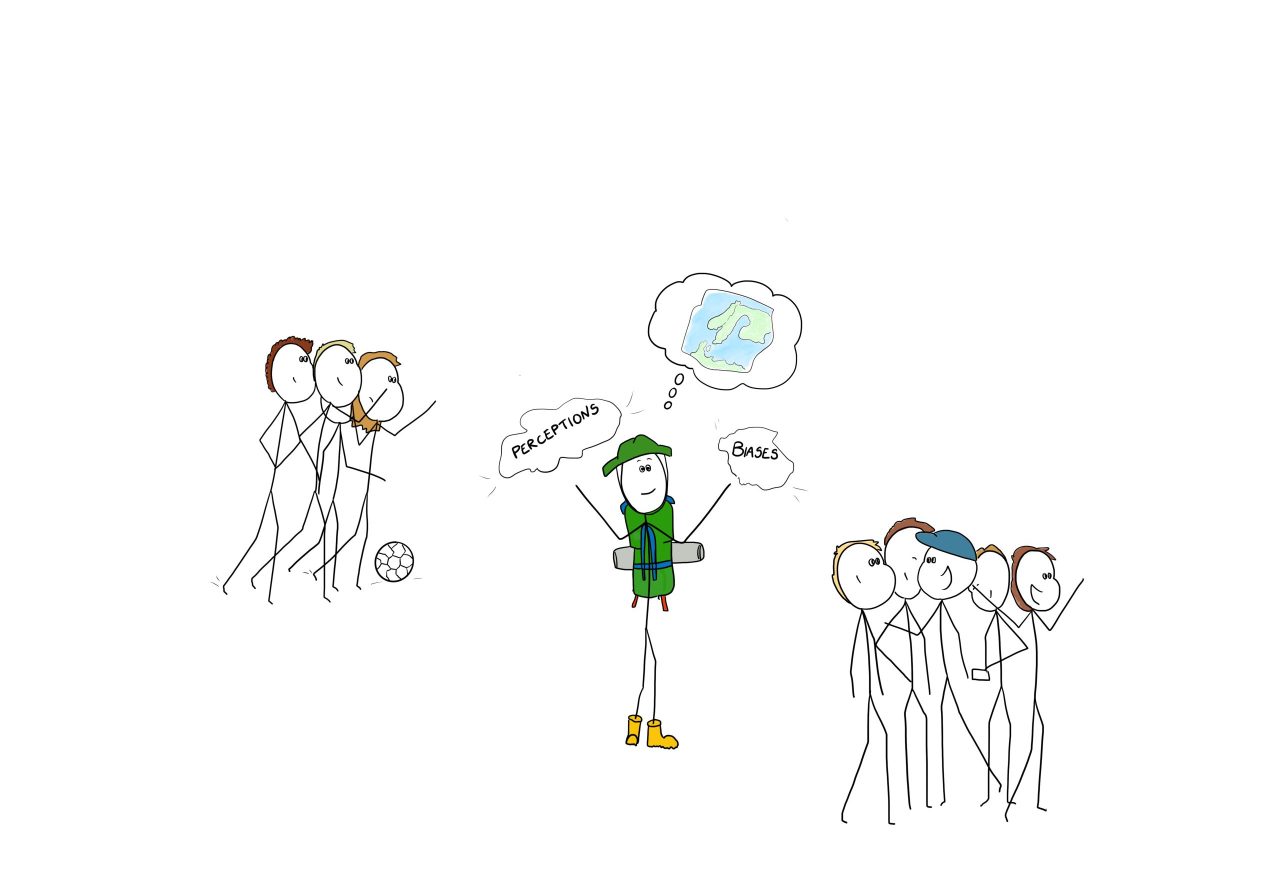
A person dressed as an adventurer, visualizing a map while walking from away from one group towards another, tossing away his biases and perceptions.
Frame activity
and social bubbles
In Norway, the international bubble is one of many bubbles.
Norwegians are special people.
They socialise around “frame activities” like sports, games, organisations etc. They form social bubbles. They take part in many bubbles, but the bubbles do not interact. They are rigid. They do not mix.

Several different bubbles filled with people.
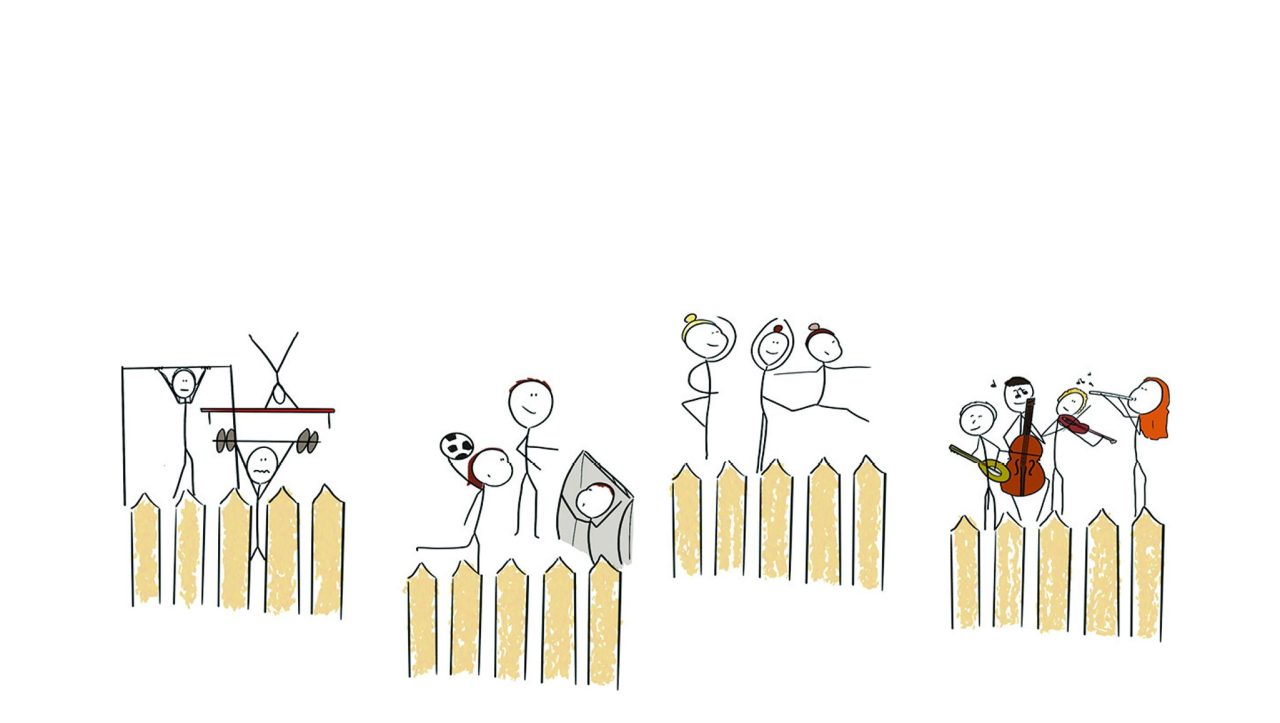
Different activities taking place behind different fences. a group working out, a group playing soccer, a group dancing and a group playing classical instruments.
Get involved – really get involved. Join frame activities, many frames. Fill your schedule with bubbles. Hop from one social bubble to another. You will feel Norwegian and be socially active like a Norwegian.
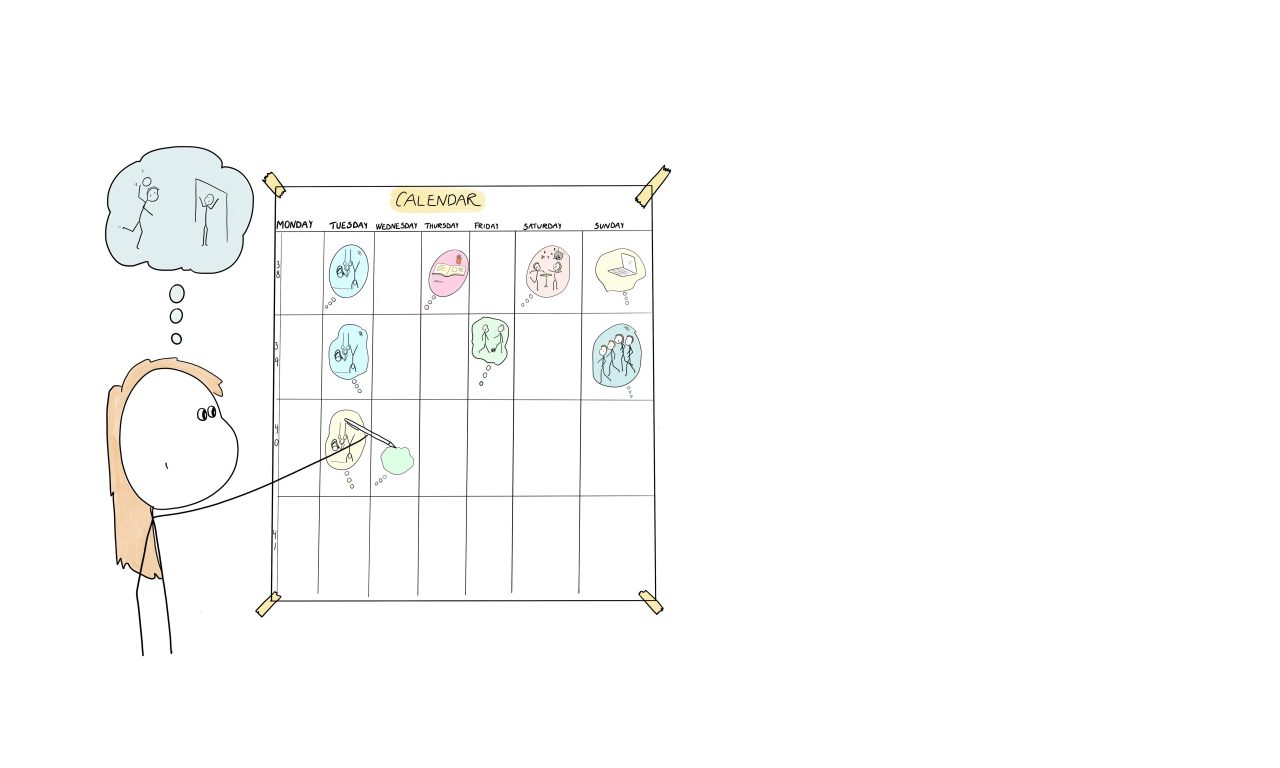
A person standing with a calendar, filling different days with various activities.
Activities with a purpose
Norwegians like to do things themselves. They may organise days where they ask you to work voluntarily to clean the streets of the neighbourhood, around the school, or sell waffles at a handball match.
Do it.
It is called dugnad.
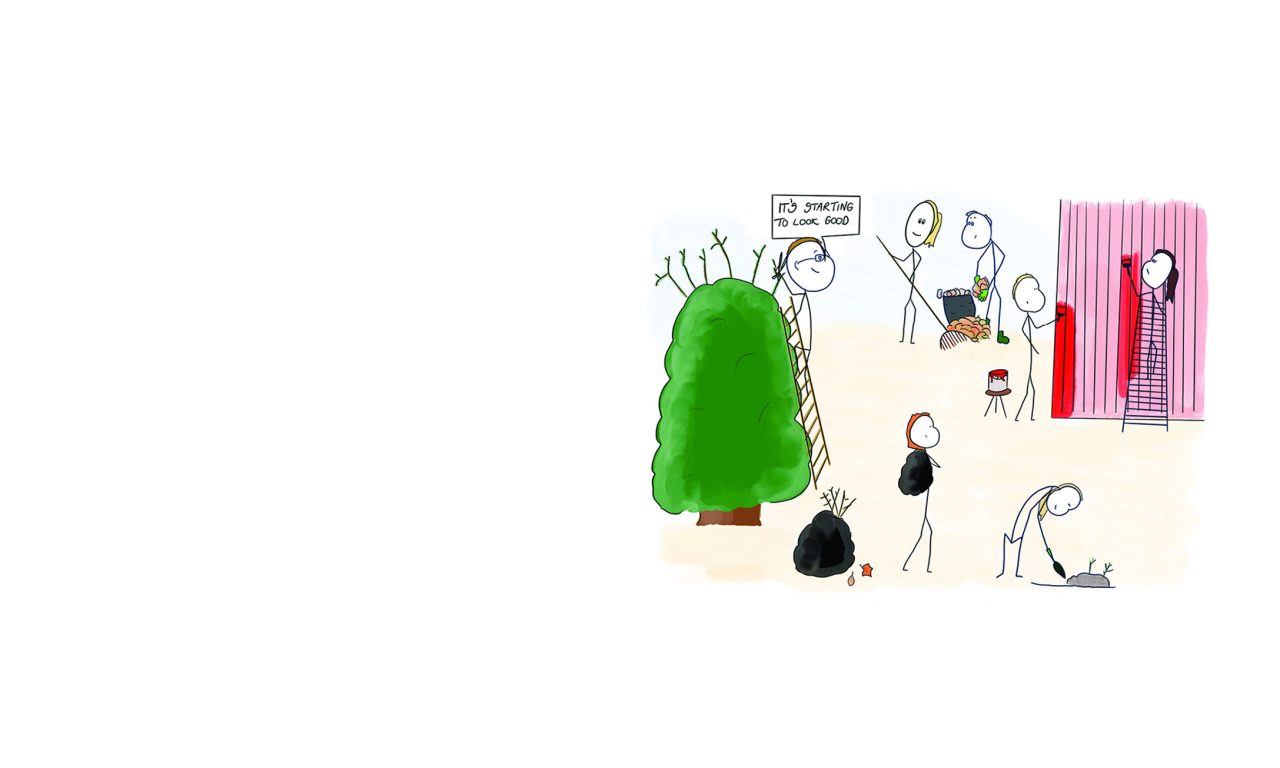
People on a "dugnad" working together. Some painting a wall, some raking leaves, one person trimming a tree saying; it's starting to look good!
Interactions are pragmatic at first. You are only allowed purposeful communication related to work activity.
Interactions become warmer after the purposeful work is done. Manual work provides a frame for socialisation. You may even be invited to go to a movie or to the beach after the
manual work.
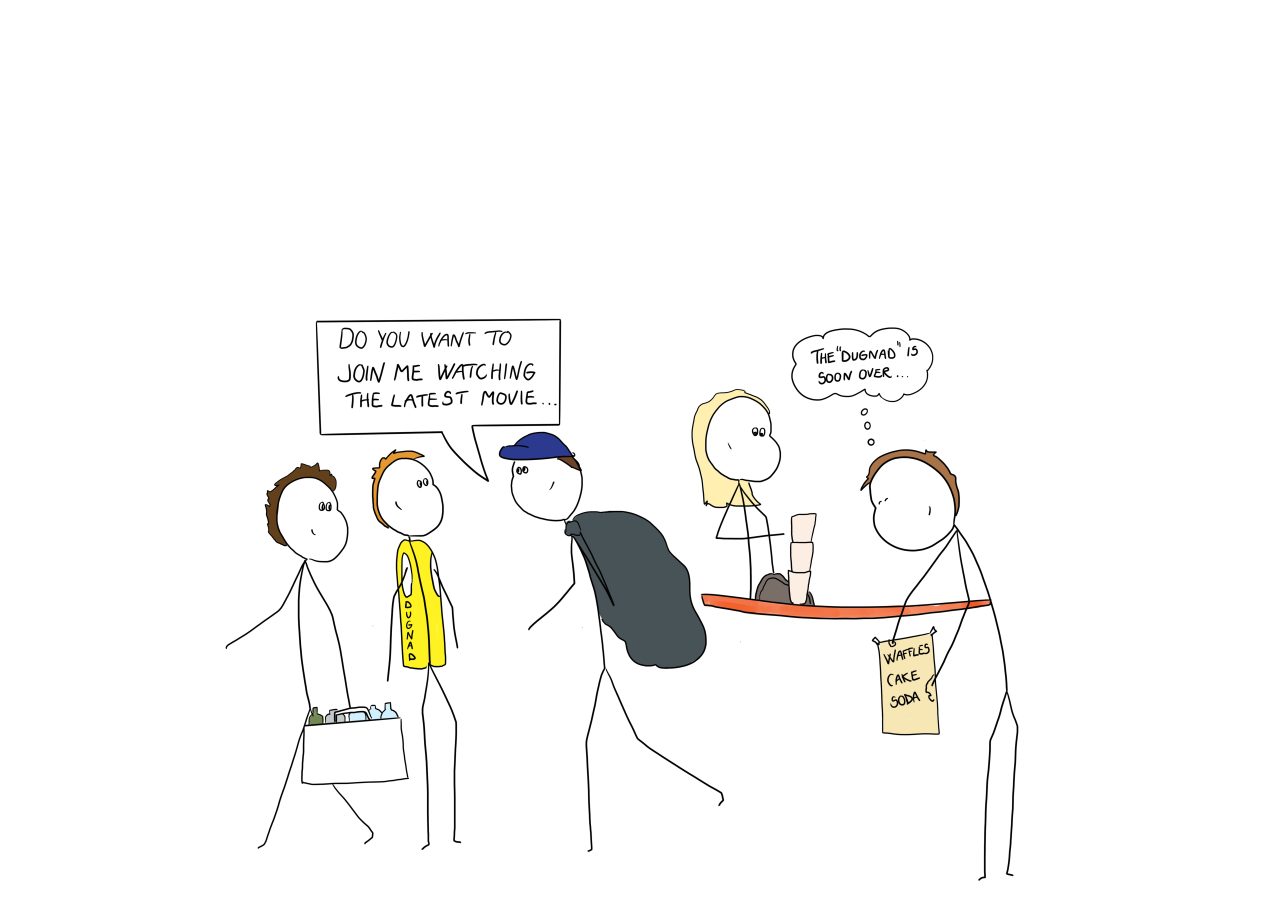
Young people finishing a dugnad. One person thinking; The dugnad is soon over. Another person asking the others; Do you want to join me watching the latest movie ...
Attempting to socialise without a frame can be challenging. Norwegians may be suspicious of your intentions. They may try to figure out why you are talking to them, what you are after.
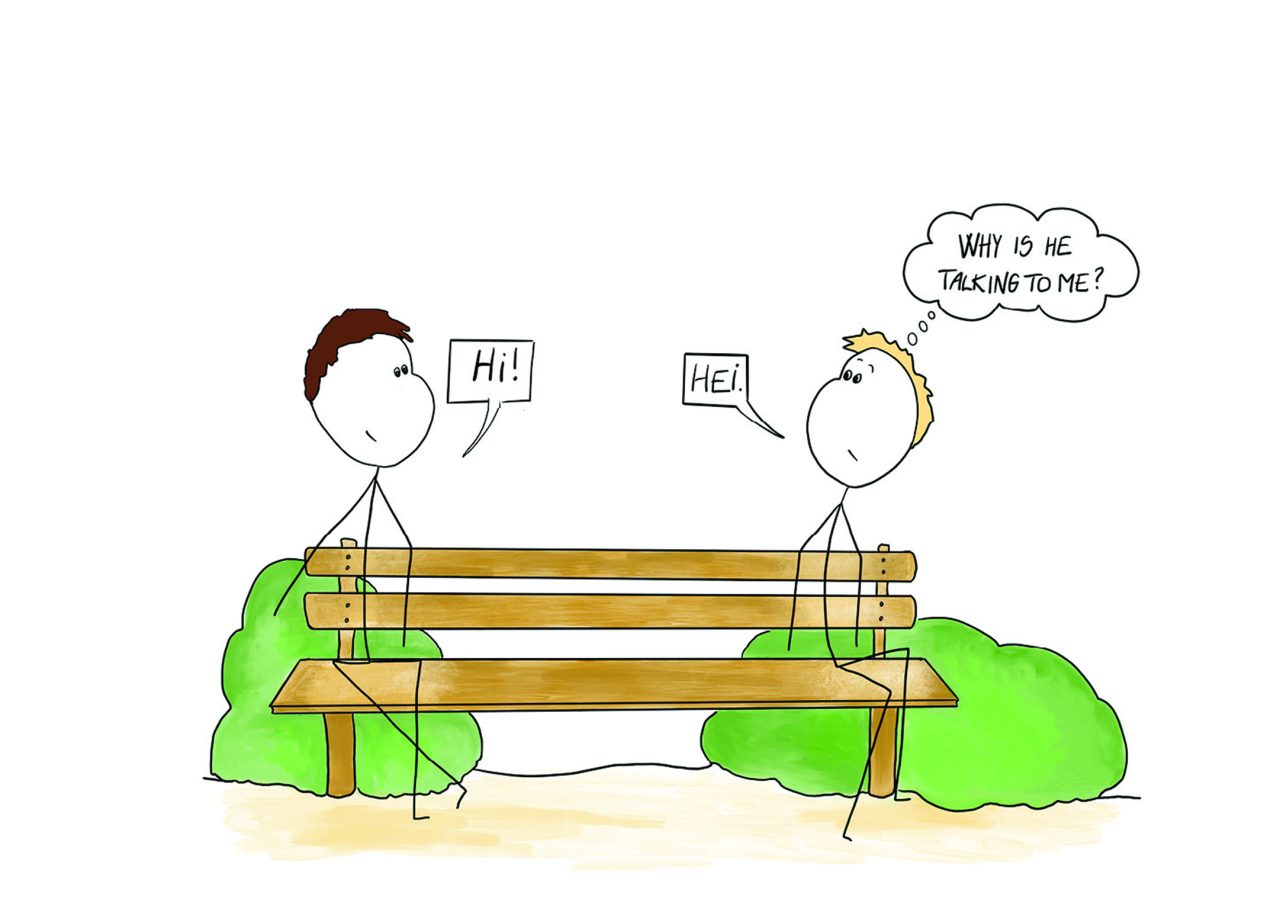
Two people sitting on either side of a bench. Both saying; hi. One of them is thinking; Why is he talking to me?
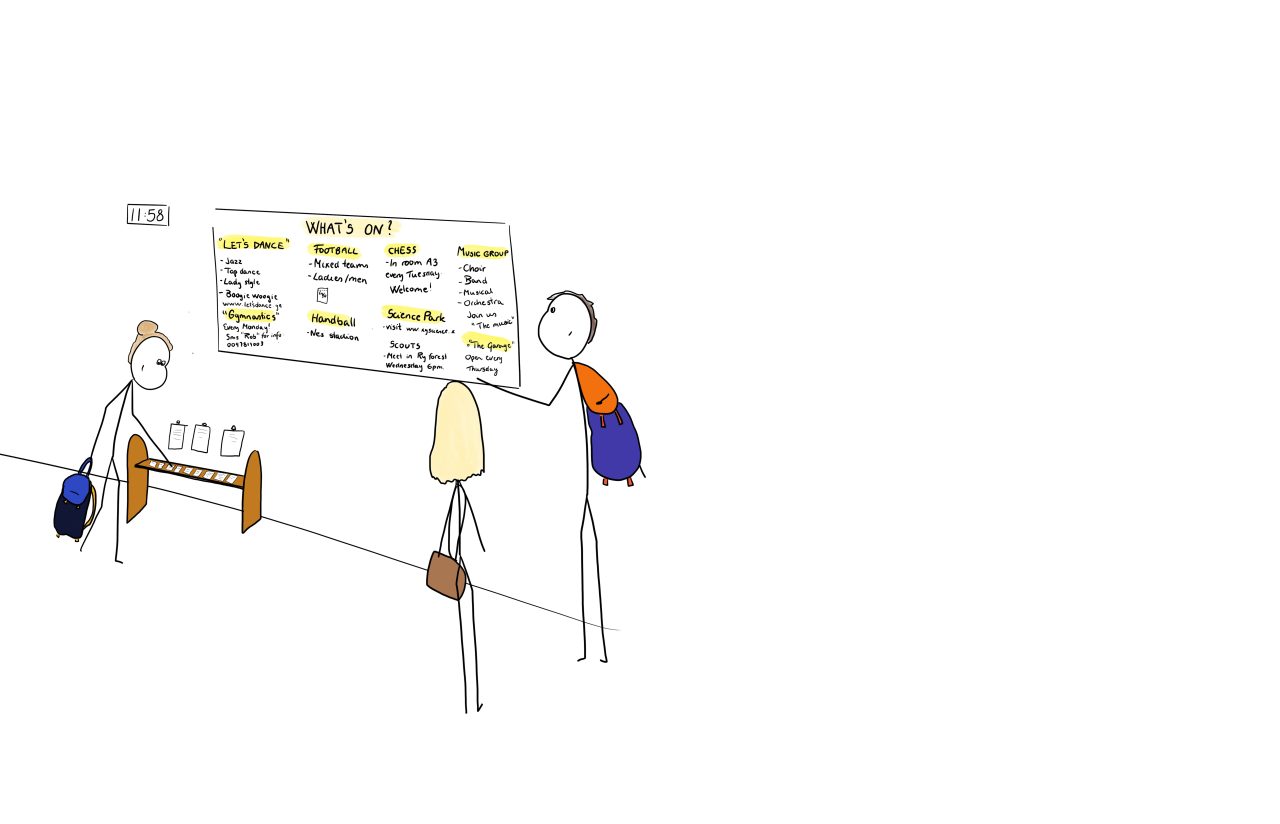
Several students in a school hallway in front of a billboard showcasing various activities they can take part in.
Getting to know Norwegians
Approach Norwegians like you would approach a wild cat. You need to be slow, careful, playful and distant. You also need to take the initiative. Play games for a few hours, a few days, or a few years and you will make Norwegian friends.
Once you are friends, you are friends for life.
Norwegians are great people. You just need to learn to connect in the way they are used to. Get involved. Take initiative. Leave space.

A girl approaching a cat, trying to carefully make contact.
Sources:
- Bourrelle, Julien S.: The Social Guidebook to Norway – An illustrated introduction (2022) Drammen, Mondå forlag
- Bourrelle, Julien S.: The Social Guidebook to Norway 2 – Friendships and Relationships (2022) Drammen, Mondå forlag
Illustrations: Elise H. Kollerud



